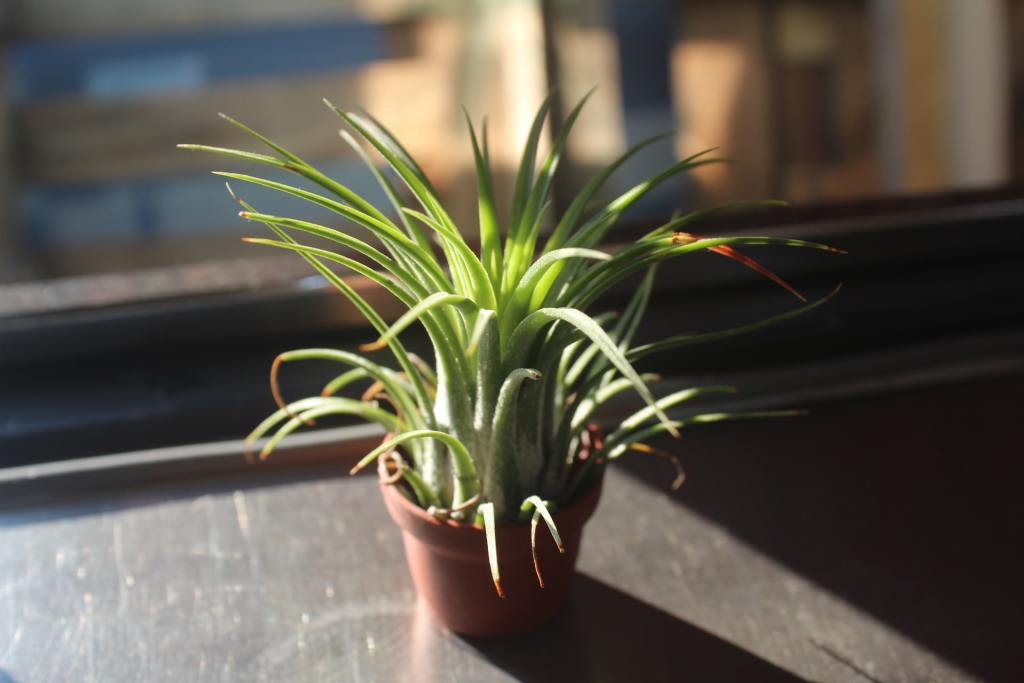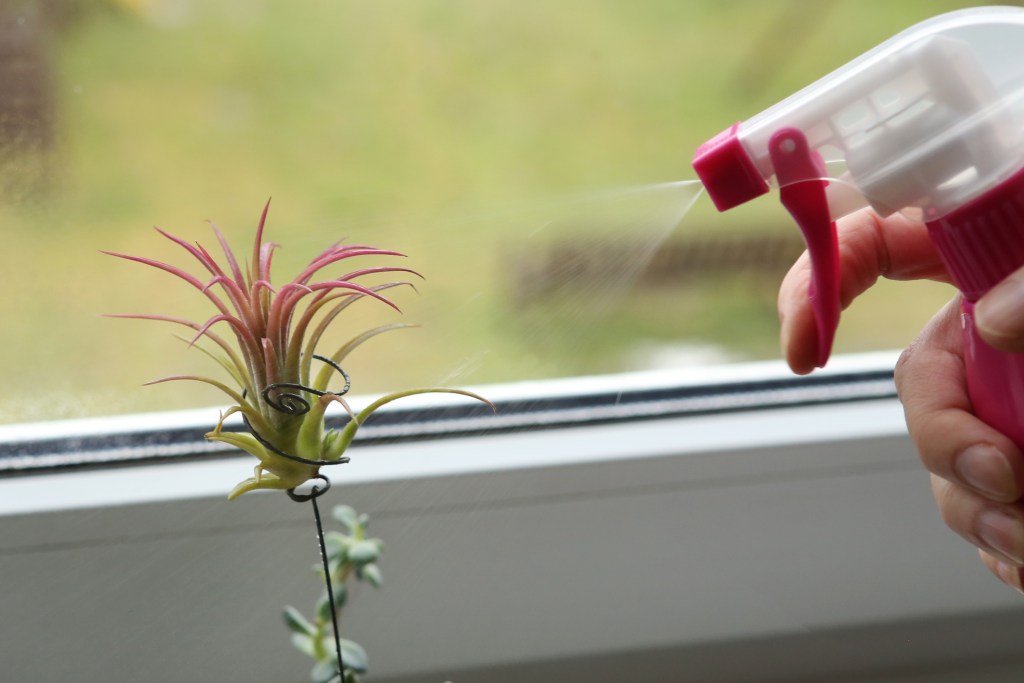Air plants are an oddity in the world of houseplants—unlike many plants, they don’t need soil to survive. In nature, air plants, or Tillandsia, are epiphytic, which means that they attach themselves to other plants instead of growing on the ground. They draw moisture and nutrients from the air through little hairs called trichomes.
When the soil dries out for a typical plant, that’s when you know that it’s watering time. But what do you do with a soilless air plant? If you’ve always wondered when and how to water an air plant, you’re not alone. For a thriving plant, read ahead to learn the secrets to watering air plants.

When to water to your air plant
When it comes to care, the air plant has similar requirements with other houseplants—it enjoys bright indirect light and moderate room temperatures. The biggest difference between an air plant and your typical indoor plant is the watering requirement. Since air plants don’t live in soil, it’s tricky to know when it’s watering time.
Luckily, your air plant foliage will give you hints about when it wants water. A hydrated air plant feels firm to the touch, and its color will be slightly deeper. An air plant that could use a drink will feel soft and its color will appear faded. Thirsty air plants sometimes feature curled and shriveled leaves, too.

Ways to water an air plant
There really are two ways to water an air plant: misting and soaking. The method that’ll work best for you depends on your environment and your specific plant. Here’s an overview of each technique.
Misting
Misting an air plant really is as simple as it sounds. Spray all of the surface area on your plant without leaving any dry patches. Make sure not to get too much water on the crown of the plant, which can cause rot. After misting, shake off excess water. With the misting method, you’ll be spritzing your plant every day (or every other day) of the week, so it’s a great technique for hands-on plant parents. Misting also works best for those who live in relatively humid regions, where air plants can supplement misting with moisture from the air.
Soaking
Soaking is less high maintenance than frequently spritzing your plant, but it does require that you pay attention to how long you’re soaking your plant. With soaking, submerge your plant into a bowl of water for anywhere between half an hour to an hour once or twice a week. After soaking your air plant, place it on a paper towel with the crown facing down so that excess water falls off. If you live in a dry or hot area, soaking is probably best for you.
When it’s especially dry or hot inside your home, you can alternate between soaking and misting your plant as well. Some people will simply water them by dunking them in water for about five seconds a few times a week, striking a balance between misting and soaking.
So, which method suits which kinds of air plants? Native to semi-arid environments, air plants such as Tillandsia xerographica can handle drought, which is why they’re more likely to be able to handle misting. Smaller tropical plants, such as Tillandsia ionantha may appreciate a good soak instead, although misting them frequently can work as well.

Air plant watering issues
- Curled, dried leaves: Curled, dried leaves are usually an indication of under-watering. In this case, remove desiccated leaves and give your plant a good soak.
- Rotting base: If your base starts to feel soft and squishy, this is usually due to overwatering, or not letting your plant dry sufficiently. Remove the rotting bits and keep your plant upside down on a paper towel after you water it so that water doesn’t collect at the base. Don’t soak your plant for too long or leave it inside a damp terrarium—misting may be a better alternative for you here.
- Salt buildup: Sometimes, you may notice salt buildup at the end of the leaves. While tap water can sometimes be too hard for air plants, pure distilled water isn’t sufficient for them because it lacks minerals and nutrients. Rainwater or well water is ideal, but tap water that you’ve left out for about a day is usually adequate.
How to fertilize an air plant
While not always necessary, feeding an air plant can encourage pups and blooms. Fertilizing an air plant really just requires another extra step when you water it. Before soaking or misting your plant, add a few drops of liquid fertilizer to your water so that it’s roughly at quarter strength. You can use an all-purpose fertilizer or one specifically geared towards air plants. Fertilize roughly once a month during the spring and summer while keeping up with weekly watering.
Figuring out which watering method works best for your air plant can take some trial and error. It’s easy to neglect these low-maintenance plants altogether, but it’s also just as easy to give them too much water. With an understanding of your personal environment and what kind of plant you have, you’ll be able to master the art of watering an air plant for gorgeous blooms and prolific pups.
Editors' Recommendations
- Stunning jade plant types to add to your succulent collection
- Beautiful, low-maintenance pothos varieties to add to your plant collection
- Easy hoya plants to add to your indoor plant collection
- Here’s how often you should be fertilizing your indoor plants
- Wondering how to water succulents? Here are the best succulent watering tips



